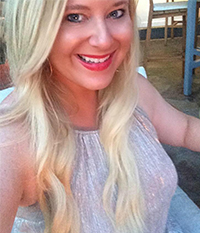Allison Beltramini went in for her first mammogram at age 40. She got a call back: She needed a biopsy. The breast cancer scare was unnerving, she recalls, but as it turned out, what her traditional two-dimensional mammogram flagged wasn’t actually cancer — a common scenario, especially for women who have dense breast tissue.
Now, at age 47 and at her doctor’s recommendation, Beltramini gets 3D mammograms. She does so annually at Advocate Lutheran General Hospital in Park Ridge, Illinois, and the screenings are covered entirely by her insurance.
The cutting-edge technology, also known as digital breast tomosynthesis, is becoming a more common option for women, and experts say it’s more accurate. At last count, about half of the facilities in the Breast Cancer Surveillance Consortium offer 3D mammogram options, according to BreastCancer.org, a nonprofit providing information to those affected by breast cancer.
The higher-tech screening gives clinicians more accurate images of breasts by using X-rays to create three-dimensional images, helping them differentiate between overlapping breast tissue and cancer cells.
As a result, fewer women are getting false-positives — which can have physical, psychological, and financial repercussions. The number of false-positives has also contributed to a debate about the value of mammograms. However, mammograms can detect cancer early, and when it’s easier to treat.
“I think the 3D mammograms do offer a peace of mind,” Beltramini says. “It was a pretty terrifying experience to have a biopsy after my first mammogram.”
So should you ask for a 3D mammogram at your next screening? Here’s what else you need to know.
How do 3D mammograms work?
With a 3D mammogram you get upward of 70 images instead of just two with a standard mammogram, explains Kimberly B. Hart, M.D., Clinical Chief of Radiation Oncology at Detroit Medical Center Huron Valley-Sinai Hospital.
“It looks like a movie and allows the physician to electronically move areas of the breast around to get a more complete picture,” Hart says.
Women who get 3D mammograms notice little difference from traditional screenings (which, unfortunately, means they aren’t any more comfortable). Essentially, the tube that takes the X-ray sweeps across the breast in an arch, gathering the images.
The same amount of radiation is released during a 3D mammogram as a traditional one, according to the MD Anderson Cancer Center.
In the San Francisco Bay Area, QTbreasthealth is an advanced breast imaging center that uses 3D ultrasound transmission technology that’s been cleared by the FDA as a follow-up to mammography. The screenings at the clinic are done without radiation and produce detailed images.
“Unlike with a traditional 2D mammogram, these images can be individually paged through by the doctor to identify unique problems without being hidden by nearby tissue,” says Aparajita Sohoni, the physician lead for QTbreasthealth.
The center then provides women with results within 72 hours.
Who should get 3D mammograms?
The short answer: Any woman who is screened for breast cancer should talk to her doctor about 3D mammograms.
But, women with dense breast tissue especially benefit from 3D mammograms, experts say. That’s because radiologists are better able to see small masses and small changes compared to what could be seen in previous mammograms, explains Christopher Henley, M.D., a radiology specialist with Northwest Community Healthcare, which serves Chicagoland.
“We’re also able to detect smaller breast cancers, which ultimately leads to better outcomes,” Henley says.
In a 2016 study published in the “Journal of the American Medical Association” (or “JAMA”), researchers found 3D breast imaging was associated with a decrease in the proportion of patients called back for additional imaging as well as an increase in cancer detection rates.
Whether 3D mammograms are covered depends on your insurer. While some companies completely insure an annual 3D mammogram, some charge women surcharges or do not cover the higher-tech screenings at all. In 2015, Medicaid began covering 3D mammography.
The American College of Radiology and Society of Breast Imaging recommends women begin mammogram screenings at age 40. The American Cancer Society’s recommendation is that women begin the annual screenings by age 45, and switch to screenings once every two years at age 55.
 Brittany Anas is a freelance writer who specializes in health, fitness and travel writing. She also contributes to Men’s Journal, Women’s Health, Trip Savvy, Simplemost, Orbitz, and Eat This, Not That! She spent a decade working at daily newspapers, including The Denver Post and the Daily Camera in Boulder, Colorado, and she is a former federal background investigator. In her free time, Brittany enjoys hiking with her gremlin-pot belly pig mix that the rescue described as a “Boston Terrier” and coaching youth basketball. She also works with domestic abuse survivors, helping them regain financial stability through career coaching. Follower her on Twitter and Instagram.
Brittany Anas is a freelance writer who specializes in health, fitness and travel writing. She also contributes to Men’s Journal, Women’s Health, Trip Savvy, Simplemost, Orbitz, and Eat This, Not That! She spent a decade working at daily newspapers, including The Denver Post and the Daily Camera in Boulder, Colorado, and she is a former federal background investigator. In her free time, Brittany enjoys hiking with her gremlin-pot belly pig mix that the rescue described as a “Boston Terrier” and coaching youth basketball. She also works with domestic abuse survivors, helping them regain financial stability through career coaching. Follower her on Twitter and Instagram.
